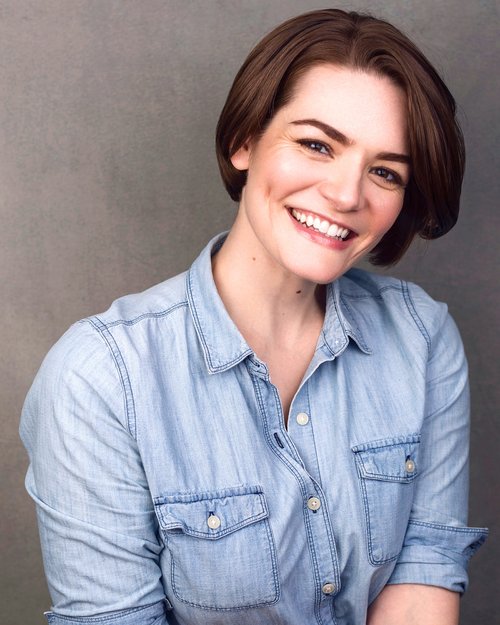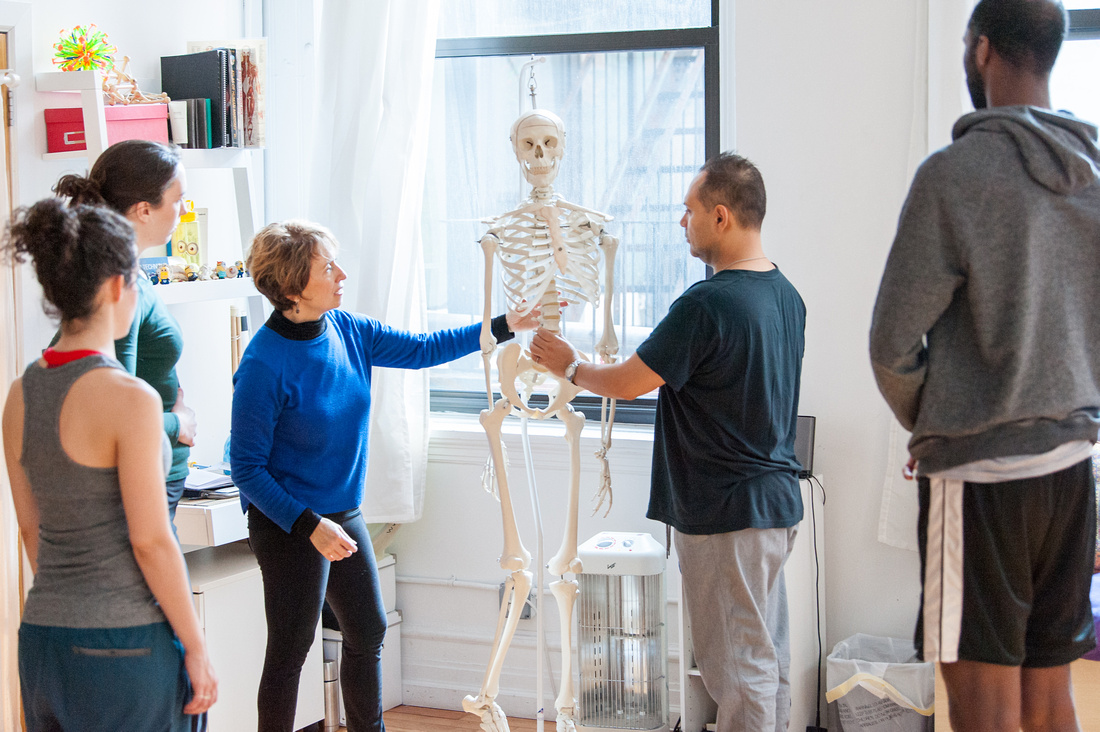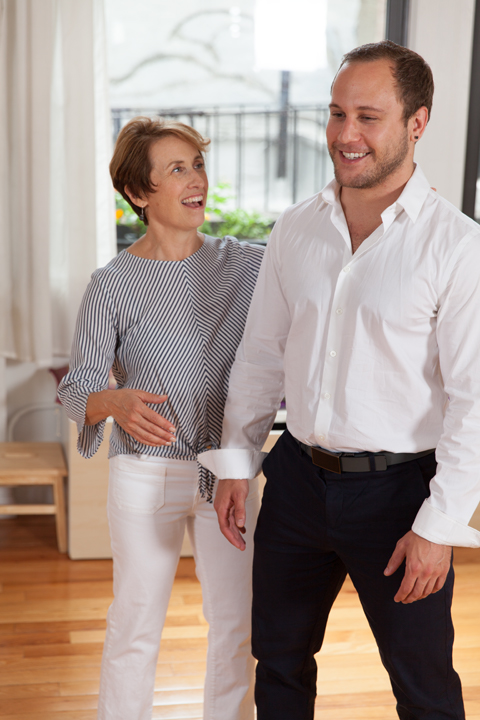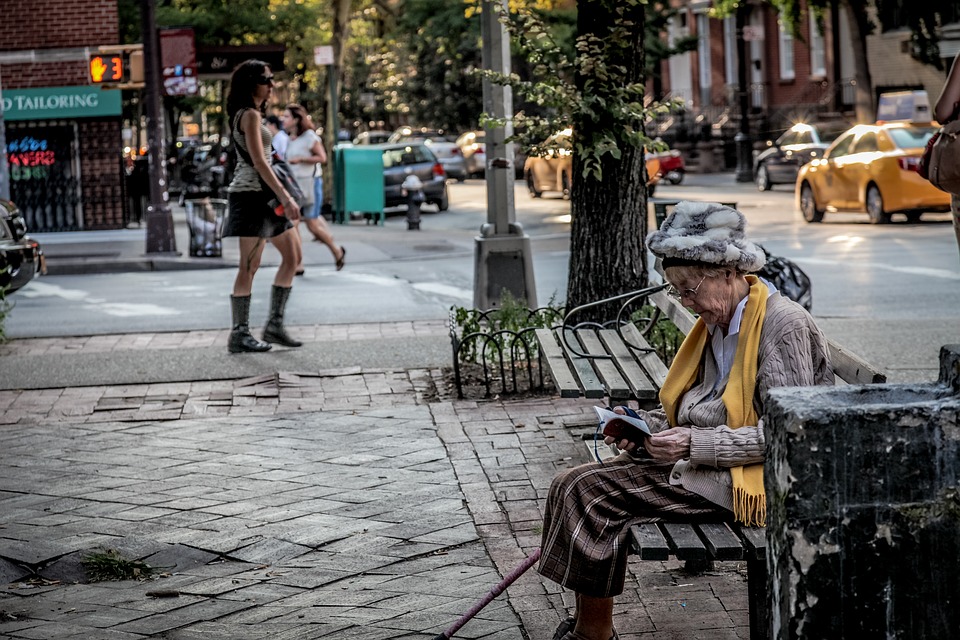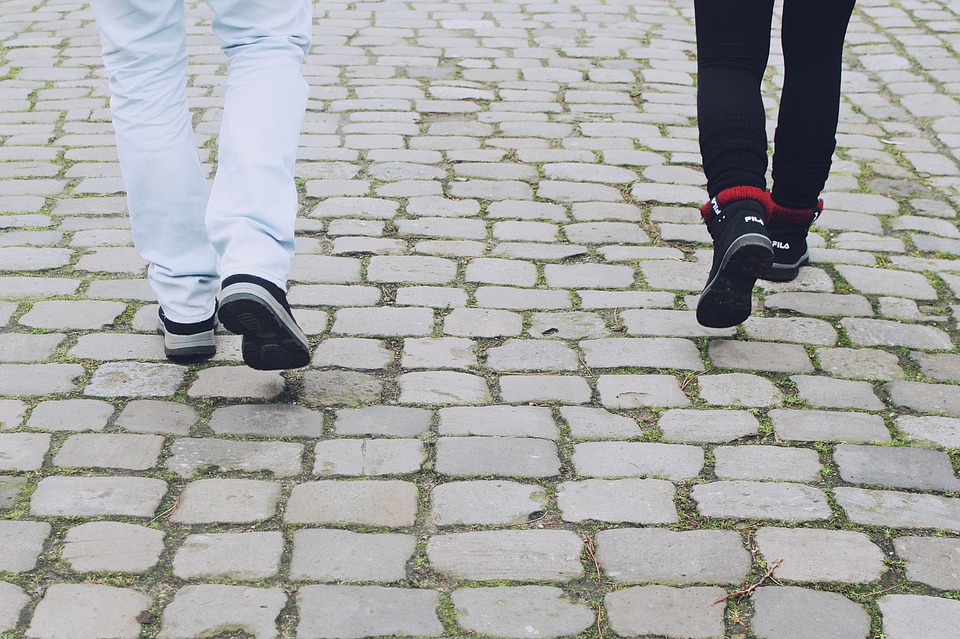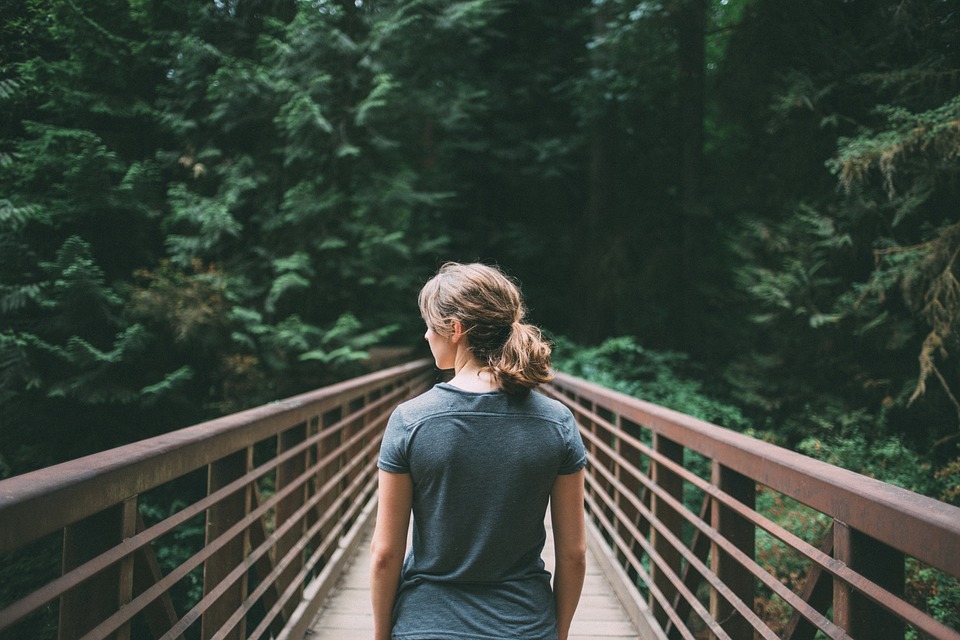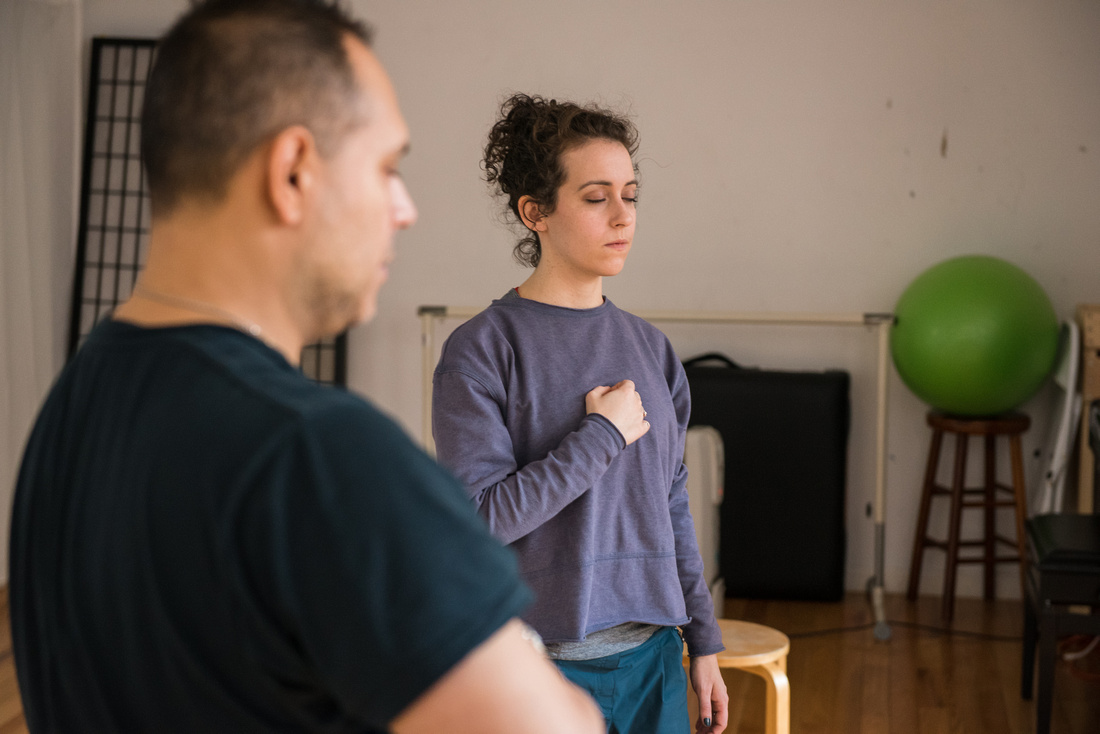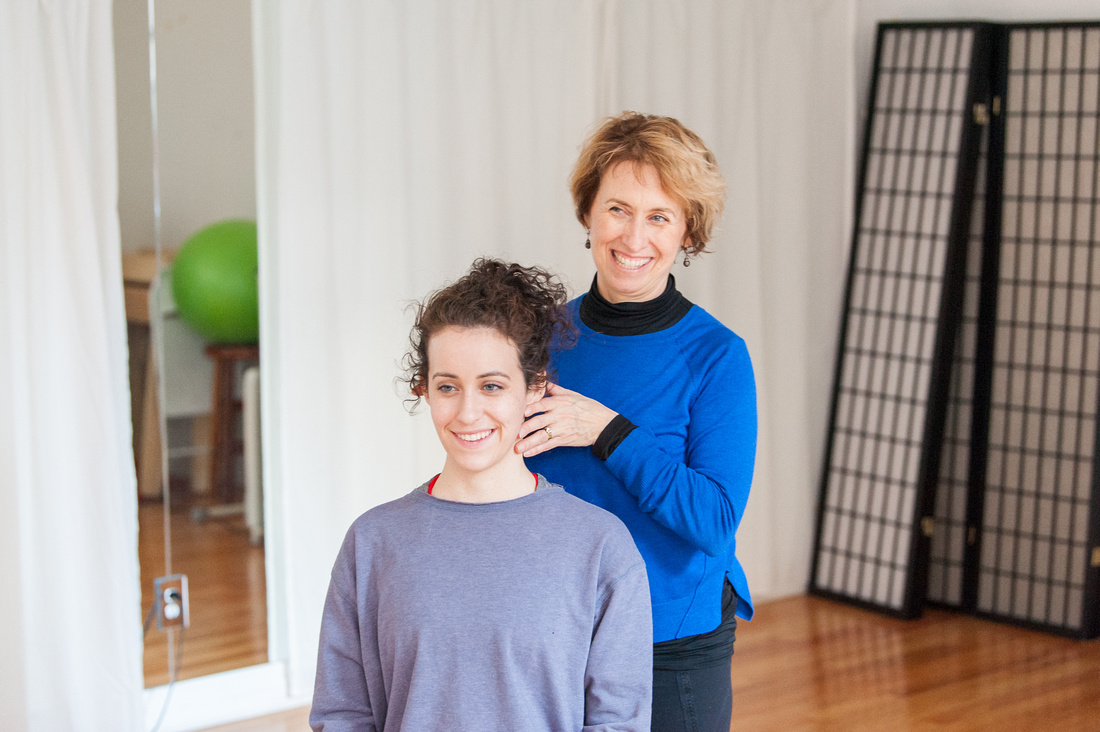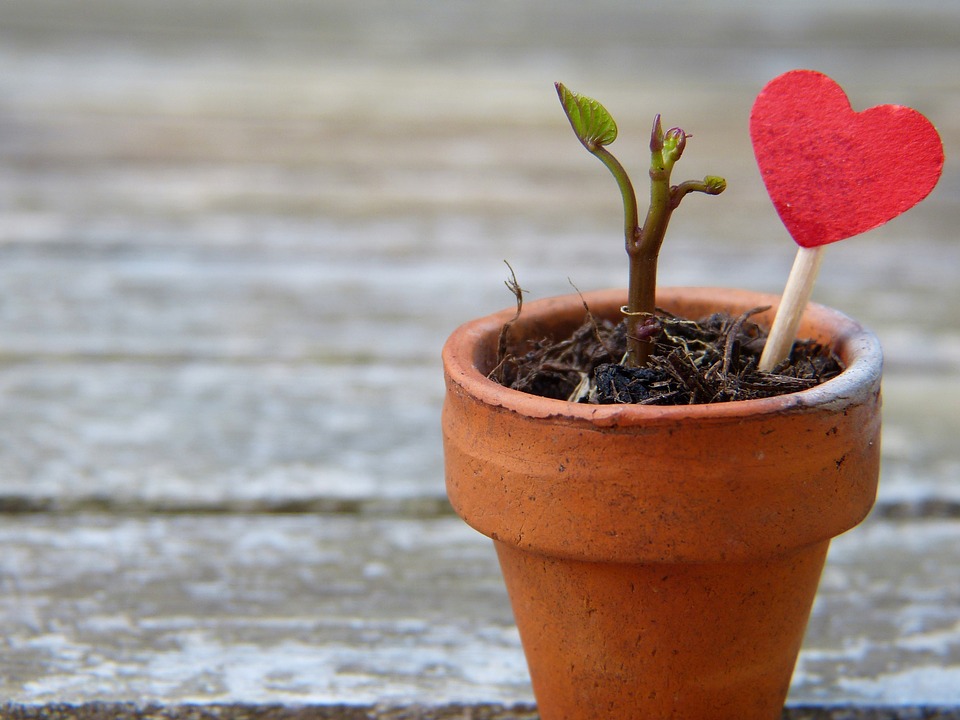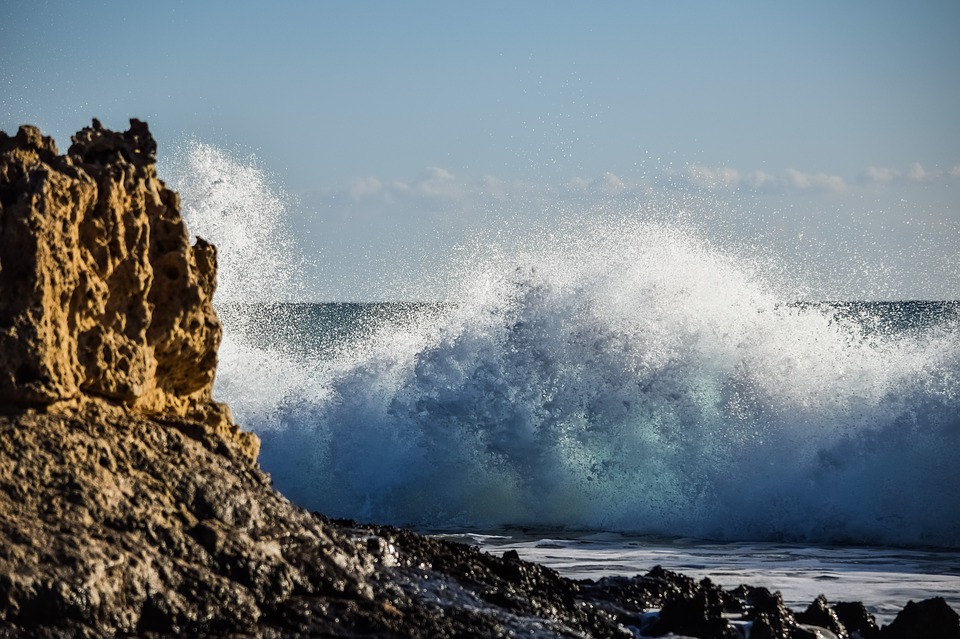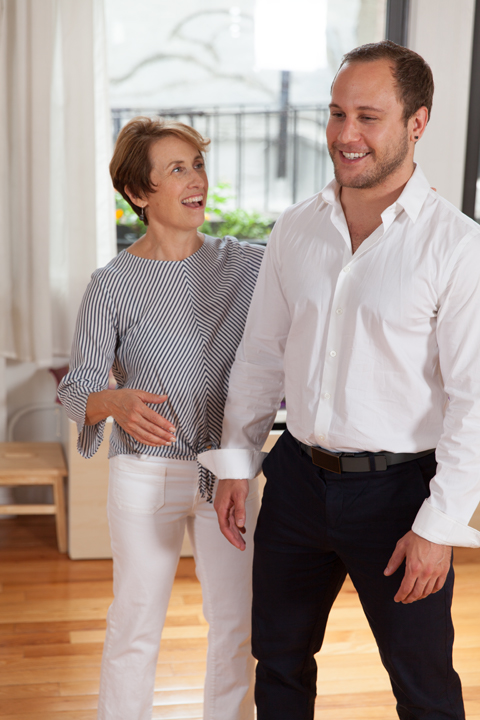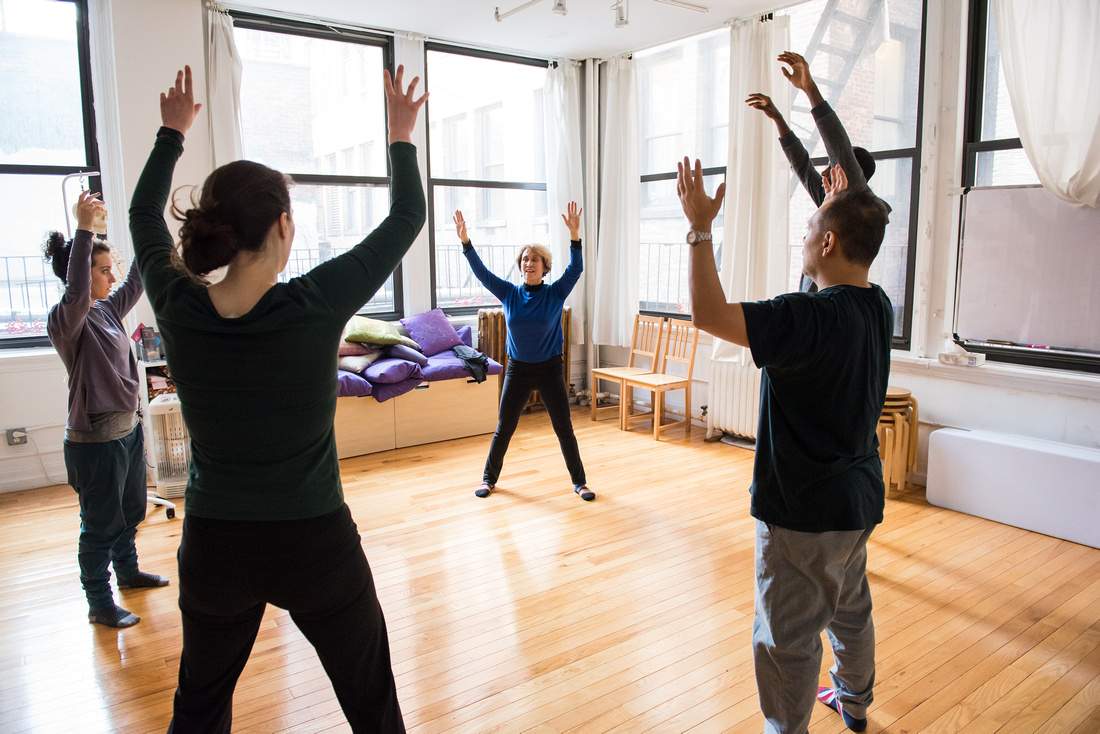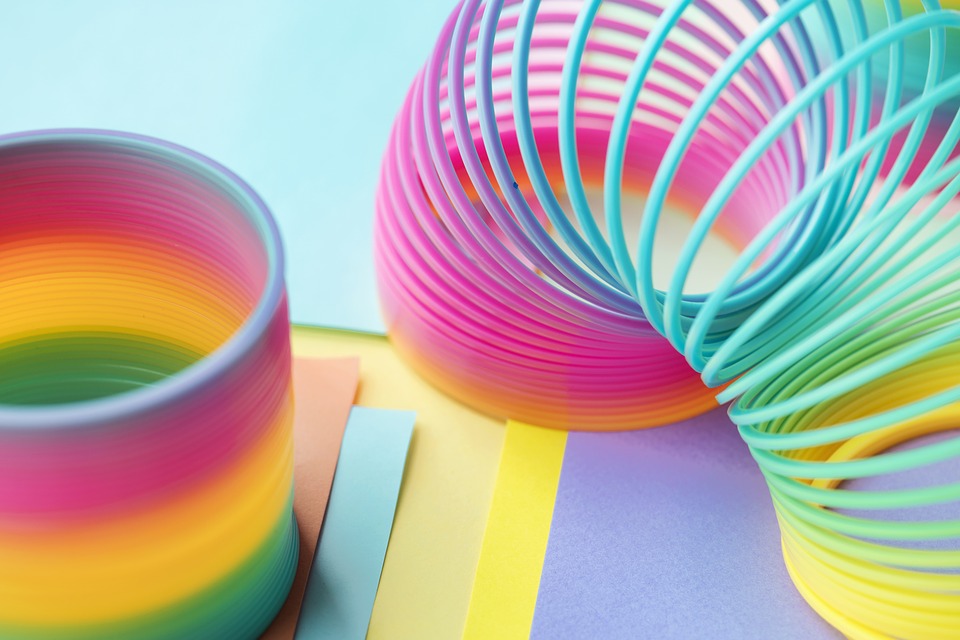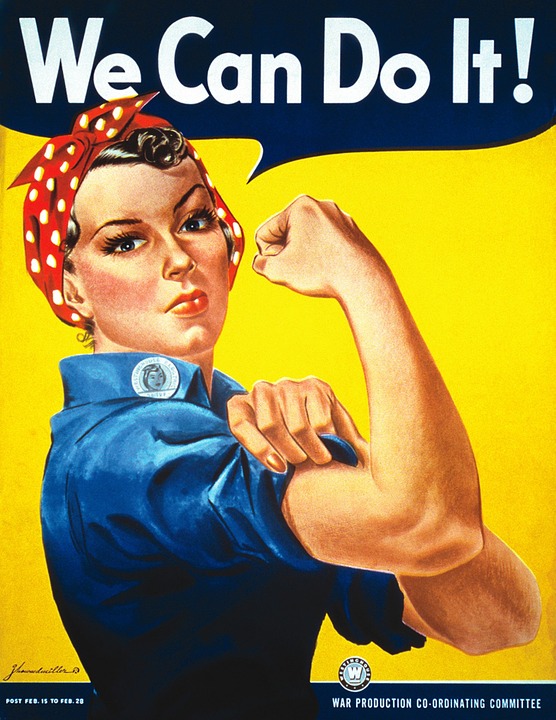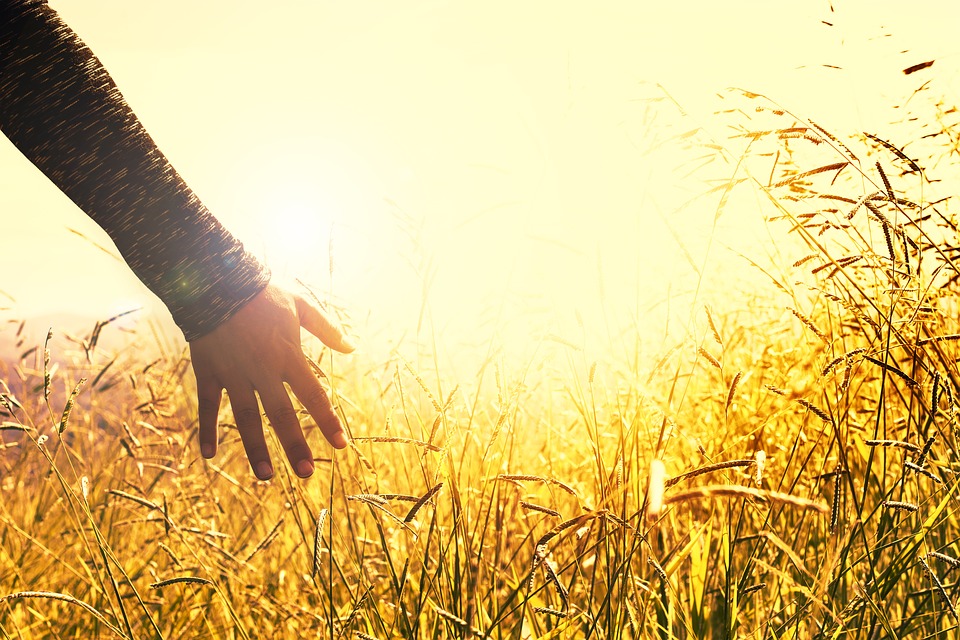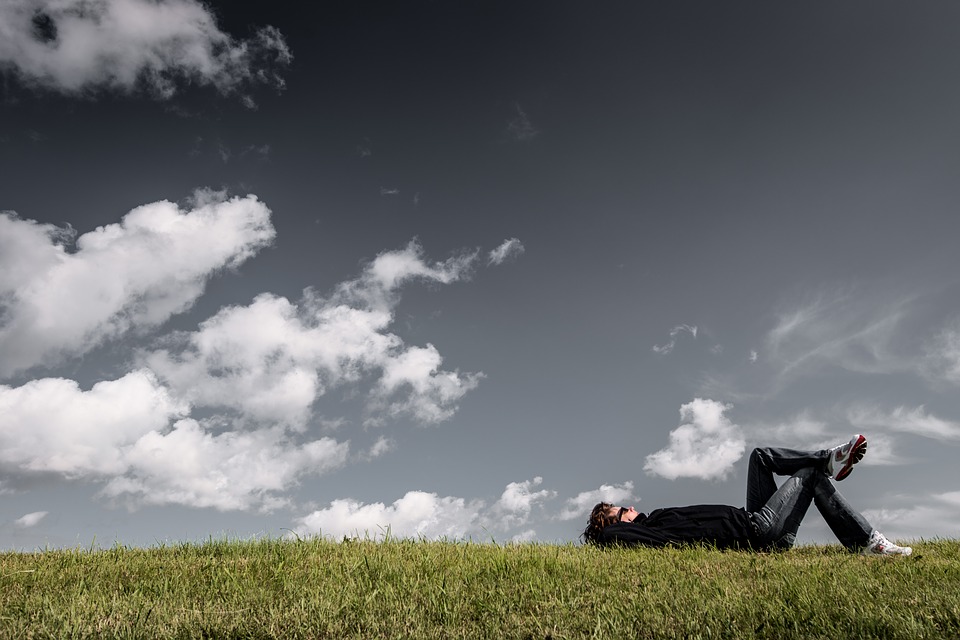
How You Move Matters
Free Alexander Technique Exercises, Tips, and Resources
Getting Unstuck!
Recently Caitlyn, an accomplished actor, came in for one of her private AT sessions. We’d been focusing on her monologue work and she brought up a particular pattern she’s been working through, and a particular goal, which she termed “not performing my insecurities.” This is a common theme in the work that I do with my clients, and inspired by Caitlyn I’ve been exploring this question in my classes as of late. What does it mean to “not perform one’s insecurities” in practice? And how can we avoid rehearsing our insecurities or tendencies?
Way back when F. M. Alexander started his self-observations, he was grappling with a strong tendency to interfere with his breath and voice when acting. Based on his own description, he was caught in a pattern that today we might call “getting stuck in one’s head”. Perfectionism and similar tendencies can lead us to defensive, self-protective behavior. When we use defensive actions, like freezing up or pushing through, we are rehearsing our insecurities.
Finding your way toward creative freedom and resiliency is one of the journeys of acting that we strengthen via the Alexander Technique. We open our acting choices, explore working with them, and curiosity + discovery is returned to the actor’s experience; the pleasure and passion felt for acting is refreshed.
What is a pattern you feel stuck in as an actor?
How often does what you understand about your tendencies align with the feedback you are getting in class or in rehearsal?
I’d like to hear from you about what skills you practice for freeing yourself from defensive patterns, where you feel successful, and where you’d like my help.
In my upcoming Tuesday special topics classes, we will be hearing from each actor and addressing the interference of their patterns in specific aspects of acting and auditioning. Those who are new to the Alexander work can continue with the basics (level 2) on Thursday evenings. On Fridays at noon, we will take time to check in on ourselves through movement and breathing.
I look forward to seeing you in the studio!
New Direction? It's Basics!
New things are happening at AT Motion!
You may have noticed a new direction. Many AT Motion classes now have a prerequisite. How does this serve you? Why take BASICS 1 and 2 @ AT Motion?
Mastery comes from having an unshakable foundation that you keep returning to and improving. Take another look at your foundation and consider what you need to move forward. When you learn the foundation of a skill, or go about revisiting your foundational skills, you are creating a firmer base that you can rely on.
Basics 1 and 2 @ AT Motion are foundational classes designed to give an experience of the core principles of the Alexander Technique (AT) through the lens of acting - very specifically through for actors. With a fundamental sense of the work as a prerequisite, you will be able to explore with more complexity. The AT can support your process in more advanced AT Motion classes aimed at specific aspects of embodying a role and living well as an actor.
It’s that simple. Begin at the beginning or revisit the beginning again and again… and then you will be ready to go deeper, take on challenges, express with precision and strength of feeling.
Lively focus is a lively choice
What grabs your attention and what fades from view?
Bright sparkling lights can take over your focus temporarily, and then your interest moves on. But when something becomes a priority, everything else fades or blurs a bit. Even loud sounds, like fireworks, can become background if your attention is pulled elsewhere.
A person’s attention is changing all the time. Attention is subject to choice. While it’s hard to maintain a singular focus that blocks out everything else, we can and do choose to place something in the forefront of our attention while letting other things be in the background.
In today’s Margolis Method class, we worked with primary and secondary focus as a theatrical tool. In other words, what do I want the audience to recognize as is the most important aspect of my character’s experience? In any given circumstance, what is primary and what is secondary?
Even if you are not an actor, this is a question you are dealing with all the time when you are trying to communicate something complex. Priorities are chosen. Often conflict occurs when there is a disagreement about primary versus secondary priorities.
Applied to nervous anticipation, changing your primary focus can reduce your stress. Instead of letting your nervousness take front and center of your attention, can you make it a secondary or background issue? Can you bring something of more practicality or even of pleasure into your primary focus?
Exploring your options starts with a pause. Open up your senses to what is around you. Use your peripheral vision or widen your scope of listening, try smelling or staying with what you are tasting a bit longer for the subtle undertones.
What do you find in the background (or secondary field of attention) that you would like to bring into the foreground of your attention?
Try this AT Motion experiment:
Primary/Secondary focus walk
Walk A: Take a walk in a familiar place. Start to notice the sounds around you. As you walk let listening and sensing be your primary focus. You might tune into the noises of the city or overheard conversations. The sounds might evoke awareness of your other senses. You will still be aware of decisions your will make about direction in space and your coordination - but let that be secondary. Let listening and sensing be primary.
Walk B: Now make a switch. Instead of focusing on listening and your senses, let your spatial choices and coordination be primary. Use Alexander’s self-directions for springing into expansion, UP and OUT into space. Let your freedom of motion be directed upward and outward. Let our energy support the upward freedom with downward support. Walk with that vertical dynamic. Include the dynamic of volume. Let your opening into width and depth be supported by a strong inward support (your core). Now let the swinging of your arms and legs bring flow into your stride as your choose your pathway or route. Coordinating with spatial direction is primary but you will still be aware of what you are taking in through your senses - but let that be secondary.
Notice the differences in your experiences in walks A and B.
Notice change.
Words: Choosing My Emphasis (Plus Free AT Exercise)
How do we choose our words?
I’m a bit awed by the power of words and frustrated by the abuse of this power in forums like twitter. I have to admit some fatigue at how difficult it is to dodge the effect of words, so that sometimes I try to rush past them or tune them out! They touch off very deeply felt beliefs, evoke past experiences and plant the seeds of our impulses.
We’ve been grappling with the impulses born from words in the studio lab this past month. We’ve explored ways of being through embodying the catalyst of a word: communicating through gesture, breath and action. We found ways of expressing monologues non-verbally, without sound. This month we are speaking the words, connecting thought, gesture and sound.
Spoken words resonate. The sounds waves resonate through our bones, while the associated meaning changes our way of being. Words offer choices in how we handle them and examine them. How we place emphasis is a choice that shifts the impact of a word. Just by slowing down a bit, we can notice the effect of our choices of emphasis on meaning.
I like to play with meaning and emphasis while I’m walking down the street.
Try this:
An Experiment- "Words and walking”:
Try this experiment about emphasis and embodied meaning the next time you are walking…
Start with this simple, true statement: I AM WALKING ALONG THIS STREET.
Divide it into 3 possible emphases: I, WALKING, STREET (who, what, where)
Play with emphasis.
1) Let’s start with the emphasis on “street."
I am walking down this street - this particular street. What is around me on this street? What is in my immediate field of attention? Am I passing under a sidewalk shed, past construction? Are there trees? Trash? Other people? What kinds of buildings are along this street? Are there cars passing by quickly or is the traffic dense and slow? Looking up, I can see the sky and feel the quality of the air, the humidity, the temperature variations, is there a breeze on this street? This street, right now!
2) Now emphasize “walking."
What am I doing? Oh, I’m walking! What’s going on with my walking? Am I earnestly attending to the efficiency of my walk? Or am I mostly oblivious to the sensations of walking? Do I dare try out a funny walk in public? What are some of the specifics of walking? How are my legs swinging? How do my feet contact the ground? Can I sense my rhythm? What are some of the AT cues I’ve been using for walking - like letting my knees release forward, easily, from the back of my knee? Can I release extra weight or tension as I walk? What about Alexander’s simple self-directions: let my neck be free so that the weight of my head releases up and out of my spine, let my back spring up tall and wide and deep, let my arms swing easily at my sides, let my legs release away from my head and use the ground.
Walking!
3) Now play with the emphasis on “I."
Here I am! I. Me. I’m the one walking, with ease if I choose it. I’m the one deciding where to go next, I walk along this street and so I am essential to this place and this moment. Every step I take is happening NOW and now and now. Here I am and you can see me! I’m here, aware of my surroundings and with inner sensation… I’m walking with my own private history and beliefs. I am.
And finally, equally emphasize all three elements: I AM WALKING ALONG THIS STREET.
Each choice of emphasis is more than a choice of words: it’s a choice of perspective. The experience of each word evokes a different way of being within the same activity.
Physical Gesture Exploration: In Life and On Stage
Gesture.
You've probably used gestures already today. With the flick of your hand, with the twist of your back or the flare of a nostril… you communicated your intentions very clearly. And in return, these gestures informed you about how your feelings, keeping you honest - at least to yourself.
Have you ever discovered that your shoulders are rising up to your ears while watching a very intense, suspenseful show — and then thought “wow, I guess that really got to me”? For most of us gesture happens before we realize that we are doing it. But at times we consciously select a gesture, like a gentle tap to let someone know “I’m with you”. We use gesture to articulate in an embodied way, distinct from using words.
I've been thinking and reading about gesture this month. Gesture and movement in theater has always fascinated me and driven my work. But the honesty and simplicity of the everyday gesture is on my mind as well. As I'm embarking on a three week exploration of impulse and gesture (see my Thursday group class for Actors), I thought I would offer up a self-study experiment in gesture and embodiment. Anyone can try this -- it's not just for actors!
Here’s an experiment to play with today while you are walking down the street.
Part 1: Observe all the different ways that the people around you are using their shoulders. If you could put words to the gestures, what are they saying?
Part 2: Experience your own shoulders, sensing tension, sensing lift or droop, pulling or shaping to the front or to the back? Asymmetry? What ever you are doing, do it more - exaggerate. Do words or images come to mind? Does this exaggerated gesture remind you of a feeling or emotion? Do you want more or less connection with other people? Slowly do less of your shoulder gesture. How does it feel to let some of it go? Consider completely letting go of your shoulder gesture? What might you lose? What might you gain?
Part 3: Take a little risk. Ask for your easy and expansive coordination: Let your neck muscles release holding your head, so that your head balance is fluid and lighter. Let your neck muscles release holding your shoulders so that your arms can swing more easily with your stride. Let your senses take in the area you are in or the street you are waking down. What thoughts and words are you expressing with this way of moving? What impulses do you feel connected with? What would happen if you used this open and easy shoulder gesture while interacting with the next person you meet?
PS Let me know how this goes!
Backstage Article: How to Stay Grounded and Avoid Freezing at an Audition
Belinda has been brought on as a Backstage Expert guest writer. Check out her first article on how to stay grounded and not freeze at an audition.
The article was written to help demystify stage fright and provide readers with tools and games to practice on overcoming nerves.
How To Avoid Being Triggered By Your Family During the Holidays
How to avoid being triggered by your family during the holidays
The holidays are the perfect time to reconnect with your family—which, for many of us, brings up mixed emotions. We love our families and we want to see them and spend time with them. But for many of us, family members also have a unique ability to drive us crazy, causing us to fall back into old patterns and making us feel like we never left.
This holiday season, if you start to get triggered by your family’s annoying habits—or you find yourself reverting back to your childhood role in a maelstrom of dysfunctional family dynamics—remind yourself of one thing. All those reactions, whether they're justified or not, are reactions. They're just patterned responses to some stimulus—and those reactions usually happen entirely on automatic pilot.
When a certain someone makes a passive-aggressive comment about your weight or a pointed joke about the fact that you’re still single, wouldn’t it be nice to find a way to create a gap between what they say and your reaction to it? To create a little cushion of time for yourself so you can be less reactive to triggers?
A good place to start is by activating your postural balance so that your movement coordination reflects a calmer, more creative use of your central nervous system.
Start taking care of our nervous system by taking care of your head. Your head is subject to the actions of your neck. Freeing up your neck is the key to taking care of your head, and therefore yourself.
You don’t need to be an anatomy expert to know something about your neck muscles because they get super tight when we're tense. The neck has layers of muscles, some close to the spine, others creating the graceful shape of your neck. These muscles move your head and manage your balance.
Take a moment to get more in touch with your neck. Start by nodding your head for a moment and feel the muscles around your throat and the back of your neck. Turn your head side to side, looking right and left. You'll feel muscles move but also stretch. Tilt your head like you're listening to your shoulder, first on one side and then the other. You'll feel a lot of stretching and contracting going on.
So, now that you’ve found those muscles that move your head and directed your awareness to them, what if you soften those muscles instead of tightening them so you aren't pulling your head at all?
When you soften those muscles, your head is much freer, and the spring-like action of your spine can release. Without pressure from tight neck muscles, the weighty head can actually rebound upward, allowing your stature to expand. Back muscles and spinal discs that were compressed can follow along in spring-like release. Breathing becomes less compromised by musculoskeletal pressure.
This anti-triggering movement frees your brain up and out instead of pulling your brain down and into your body and mindless reactivity. So give it a try next time the holiday cookie tray gets passed around. Freeing up your neck/head/back relationship will give you a cushion of time for being less triggered.
What can you do in the cushion of time you’ve just found? Take a minute to appreciate being unhooked and take your attention off yourself. Observe your family members neck and heads in action. Notice how they're moving (or not moving) and what's happening with their balance. Are they scrunching down on themselves? Are they moving easily with lots of flow?
Chances are that you've been unconsciously mirroring the tension of the people around you. If they're holding an opinionated position in a conversation, they're probably also holding a rigid physical position. If you can un-position and be more flexible, you’ll have a great advantage. You won’t be stuck.
So how does ease and freedom in your neck help you be less reactive emotionally? Flexible neck/head/back coordination goes along with resiliency. Whereas tension makes us more self-conscious, release of tension enhances our awareness of what's going on moment-to-moment around us. Like other vertebrate animals, we’re more rigid when we’re on alert and more plastic when we’re at ease.
When you "unset" your neck, you're moving out of your old patterns. You're opening up the possibility that you don't have to react to your usual triggers. You're opening "up and out" to new experiences with your family. And they’ll be experiencing you as your most resilient, calm, and joyful self.
Happy Holidays!
Belinda Mello
What is AT Motion?
WHAT IS AT MOTION?
"At a certain point the boundaries between acting technique and Alexander technique began to fade...and a stronger sense of teaching a whole person in a dynamic, personal way became clearer to me".
It may have started when I was a young performer. I happened upon a site-specific performance that made my heart skip! The director was Anne Bogart, and she opened up my world by showing me that my passions for improvisation, movement and story were all facets of one creative design. Later I was able to work and perform with her - how fortunate I was to be given such a key to life and art. Slowly I have continued to learn that the distinctions or categories we sometimes believe in don't serve us. And I honestly admit that I have to fallen for false beliefs about "this versus that" over and over again in the process of learning to recognize them.
Another stroke of luck was landing a job as adjunct in the Brooklyn College Theater Department. I got to teach lively, sometimes rowdy and emotional, but always big-hearted young adults on their journey as actors. I am so proud of the accomplishments of those former students. Along the way, on my own journey, I built curriculum over 15 years of teaching and earned an MFA. I studied and taught Mask, deepened my appreciation for the many modalities I learned over the years while developing my own unique teaching approach. Recently, I have added Margolis Method into the mix.
At a certain point the boundaries between acting technique and Alexander technique began to fade... and a stronger sense of teaching the whole person in a dynamic, personal way became clearer to me. I discovered that the work I was doing with actors proved to be invaluable for my private AT students, none of whom were actors themselves. This is why I call my work AT Motion. I started with the idea of Alexander Technique in motion, but I no longer feel that I simply "apply" Alexander's work to motion. AT Motion now means BEING in motion, being at motion, being as motion.
AT Motion is my unique approach to being at motion.
You are made to move. The more you allow yourself to move freely, the healthier and happier you'll be.
Soften Rather Than Harden into Resistance
“The trick to doing this is to stay with emotional distress without tightening into aversion, to let fear soften us rather than harden into resistance.”
I recently shared a quote from the Buddhist monk Pema Chödrön about a practice for developing compassion. She proposes building empathy by imagining ourselves in a distressed person’s shoes, feeling what it’s like to be in dire circumstances. “We can expect to experience our fear of pain,” she reminds us, “Compassion practice is daring.” She invites us to learn to “relax and allow ourselves to move gently toward what scares us.”
What scares us in dire circumstances is related to what scares us in daily life. We can practice building our empathy by practicing ease in the face of daily distress. And we certainly have plenty of daily stimuli. Dealing with anything unexpected or unfamiliar can throw us off. We fear pain and also we fear the emotional stress being wrong. Many of us fear feeling the humiliation of being seen caught in a mistake. Avoidance of feeling shame keeps many people in the shell of habit, away from engaging in change.
Alexander Technique isn’t Buddhism or any kind of spiritual practice. But it does offer a means for change and receptivity. Sometimes in AT lessons, we feel unfamiliar with changes in posture or breathing. When a person is guided toward a more integrated physical presence they feel often feel more open, but also less like their usual self. Sensations, previously avoided, may be felt again.
Taking an AT lesson involves the audacity to gently and consistently let go of patterns while choosing to stay easy enough to feel more of… everything. Capable of a wide range of experience, we are designed to include it all. This is a great time to develop compassion!
Practice:
Make a tight fist. Now soften your hand and let it open and expand.
Repeat and notice the sensation of ease and un-doing. Notice how the sensation of expansion is light and multi-dimensional.
Now do the same with your neck, just for a moment. Tighten and sense how compressed your whole body becomes. And release the tightness! Sense how springy you are, how you can rebound up and out when you release your neck tension. You probably took a deep breath, too.
Without adding more tension this time, simply ask for another level of undoing in your neck. Notice how you feel when you do this – emotionally.
Can you continue to practice this simple act of softening when you see the news about refuges and immigrants? Or global warming?
Can you continue to practice this simple act of softening while you write your Mom a postcard or make a phone call?
Everything is changing - What can I count on?
Everything is changing - What can I count on?
Sometimes I crave change. When it's my own choice to change my habits, I look for change. When feeling playful, I might switch things up by instigating a change. At other times I hate change and the feeling of vulnerability that comes with unexpected change. I might then react with resentment or resistance. Change is happening all the time, and these days I often feel at odds with the rapid changes happening from the White House. When change feels out of control, what can I count on? Is there something that I can do to find support through change? How can I re-establish my sense of wholeness and unity so that my vulnerability isn’t a liability, but an aspect of my resiliency?
We’ve been training for change all our lives!
I was fortunate to grow up in place where I could wander and play outdoors with other kids for hours. We lived within the rules and limits set by our parents, but adults did not structure our play. I remember learning to climb trees by trial and error. At first, trial and error taught me about fear of falling and my tendency to let fear discourage me or stop me from moving completely. I saw how the other kids who could climb easily had a fearless attitude. I mimicked them; I stole their moves and their upward intensity. I developed a pattern of hand and footholds that allowed me to feel confident in getting up and down from one my favorite maple trees. I learned how light and free I was when I believed it was possible — I just had to follow the “up” in my being and my movement, not resist it. My upward intention and energy made it fun.
In Alexander Technique, and movement-based practices, there is an emphasis on liberating the “up and out” direction of our core posture and coordination. A former AT student (Joan Brittain) sent me an email about returning to her T’ai chi class after a very stressful time away:
Our teacher David said I missed some stuff but one of the things everyone needs to keep working on is keeping the "ding" up--keeping the crown of the head up--through every movement. As he demonstrated this, I thought, "Oh yeah, Alexander's primary control." Then, he said, looking me in the eye, that, ideally, we would maintain an awareness of the ding and of keeping our "frame" as we move, at every moment. And, I said with a certain look in my eye (you know that look), "Yeah, we could." He stopped, surprised, and repeated what I'd said under his breath, then chuckled, and moved on to his next point.
The ideal of keeping an upward direction going all the time seems like a tough expectation, but if we are treat ourselves as the lively and whole beings we are, we can experience an appreciation of an on-going process – and develop a sense of humor about the ebb and flow or trial and error in that process.
One thing we can surely count on is the constant state of change, and our intrinsic mind/body unity. Our unity or psychophysical wholeness is reflected in our design for freedom of thought and freedom in action.
Your “primary control” or “ding” or “upward intention” can be counted on to be constantly available. Your energy is always going on, and you are always organizing through your head/neck/back relationship, up and/or down. When any of us are afraid, we pull downward or inward. When we tighten down we interfere with our intrinsic response to gravity, we feel our discouragement, and we sense our reluctance to be moving. The way back to resiliency, and to grace, is through awareness of choice and willingness to let go of resistance. It can be as simple as unclenching your fist or agreeing to let your ribs be spring-y as you breathe. Releasing your thought/movement is an opening for a new direction and a renewed sense of wholeness. You can count on your natural design; you are a cohesively unified thinking, feeling and moving being.
F.M. Alexander’s 4th and last book, written in the 1930s and 40s at a difficult period of change and war emphasizes the significance of approaching action through an understanding of the psychophysical unity of self. He believed that with knowledge comes the responsibility to use that knowledge well. The book is titled, The Universal Constant in Living.
Giving and Receiving
Just had a FaceTime chat with my good friend and mentor, Bill (Dr. William Conable). He reminded me of the importance of finding a balance between giving and receiving. This may sound like I am referring to the holidays and gifts, but I’m thinking about energy and the balance we need in daily life. With all the running around we do in NYC, we can easily find ourselves overextended. How are you going to practice balancing giving and receiving this year?
Powerful Not Passive (Free AT + Margolis Exercise)
Powerful Not Passive: preparing your muscles for the work ahead!
It's been quite a week, post election.
How have you been managing your fear, anger, grief or your anticipation of conflict? Many of us turn to the methods we've learned in AT. Finding the support of the floor and our natural buoyancy brings us back to a sense of balance with gravity.
But are we also seeking a way to escape strong feelings? I've noticed an unending news articles and pundits explaining and discussing. Is this really a strategy for staying on the sidelines, seeking comfort in habits of over-thinking? (The word “normalize” has been used recently). Are we at risk of confusing our strong feelings with our tension?
What about using AT for grounding so that we can listen to all the inquiry in order to awaken instead of relax ourselves?
I'm not diminishing the value of unwinding from panic as part of a recovery process (see my PDF on trauma recovery). Healing from trauma and stress does involve the release of excess tension and recovering our ability to breathe. This includes dealing with the stress of our historical trauma, also being kicked up throughout this contentious election season.
But while relaxing has its place, ultimately we are most cooperative, most flexibly intelligent, most inventive and most empowered when we are lively in mind and body. Think of springs and elastics as examples of resiliency. Consider the dynamic pull of the moon on the tides. Think of the tensegrity of our own natural and energetic design.
Let's practice sensing our strength; let's build our ability to be powerful and fierce in our understanding of what calm and ready for action entails. Ferocious equanimity!
In 1923, Alexander published, "Constructive Conscious Control of the Individual”. He wrote about the significance of accurate sensory perception – not feeling good or feeling bad – really taking in and using sensory feedback for sustained and efficient action. His work woke people up so that they could respond to what was happening in the moment. His process supported the writers Aldous Huxley and George Bernard Shaw, for example. And his principles, when applied, can continue to bring us into action, unencumbered by habit – including habits of using analysis to feel removed from conflict, or retreating into quiet acceptance.
Kari Margolis offers an excellent example of how to practice sensing movement in an empowering way. In the language of her Margolis Method, we can bring form rather than only shape to our actions. We move and sense with our muscles to better understand the elasticity involved in meeting resistance. This kind of awareness builds a deeply embodied sense of options. Choice emerges from awareness.
You don’t have to be an actor to use this Margolis Method exercise to sense how your power and your ease of motion interact.
Try This Free Exercise:
1. Start with shape: make interesting shape with you arm, but only paying attention to the way you are shaping your bones. Notice how stiff or self-conscious this feels.
2. Recreate that same shape with tension. Tension = muscular activity in one direction, towards your bones. Notice how the tension in your arm is affecting the rest of you!
3. Starting in the same shape, allow your muscles to expand in all directions; away and toward the bones. Notice how different you feel, perhaps more awake!
4. Start in the same shape, sensing your muscles again, but moving – vary the levels of resistance from light to strong. Notice how you can play with your muscular sensation. Does this feel more powerful than just making a shape or using tension.
Let’s use AT to drop away old habits and build our strength. We can face an uncertain future with a sense that presence, and the inner calm it brings, is a choice not a safety strategy; we have strength! We can use AT to be awake, aware and ready for the midterm elections of 2018!
Suggestions for Recovering from Stress, Trauma, or Grief (+ Free AT Exercises)
Here are some simple grounding steps one can take to reconnect with self and to the present.
You may already be using an effective means of coping – bravo – this is meant to encourage and support your personal process. Do as much as feels safe in the place you are in right now – you may be surprised by how much that is!
Take your time; allow each thought to settle in. You are whole and you are sound, regardless of how you are feeling right now.
Notice your skin all over: open up to sensation
Are you breathing? Holding the breath blocks feelings; while this may feel protective, it can impede your recovery. Go back to the first step, start again without holding your breath.
Include the awareness that you are sitting or standing on the ground, on the earth
Acknowledge your relationship to the earth through the grounding effects of gravity. As you let go of holding up your weight, your system responds by lightly expanding up and out. You are safe to “undo” because you are supported.
Are you breathing? Breathing is easier when we have released some of the pressure of working against (or collapsing into) gravity
Now include awareness of the space you can see in this moment. Lightly remind yourself that you are more substantial when you expand into the space than you are when you contract from it.
Now incorporate the space outside your visual field in this moment, hear the sounds and let them pass by.
Notice how you feel while continuing to be as present as possible with the awareness you’ve gained. I hope this is helpful – feel free to pass it on to anyone you think can make use of it.
An Article Belinda Co-Authored: Theatre, Dance, and Performance Training: Volume 3, Issue 1, 2012
Cultivating a lively use of tension: the
synergy between acting and the
Alexander Technique
Teva Bjerken, Belinda Mello and Robin Mello
Theatre, Dance and Performance Training Volume 3, Issue 1, 2012
Abstract
This paper explores how the Alexander Technique concept of ‘use’ provides a means for exploring tension within the pedagogy and practice of mentoring young actors/artists. It presents examples taken from classroom instruction, linking the Alexander Technique with acting performance as two related and synergistic processes. It also provides examples from basic curricular processes and examines a composite case study, which stands as an aggregate portrait for students working in a university-based conservatory training programme. The discussion concentrates on how learners develop a lively, flexible and psychophysically grounded craft and ends by reflecting on the function of the Alexander Technique and its ability to provide a framework for theatre artists.
Belinda Interviewed on Alexander Audio
Belinda was interviewed twice by Robert Rickover of AlexanderAudio.com
Listen to Belinda discuss How Actors use the Alexander Technique and [Her] Experience with the Alexander Technique:


